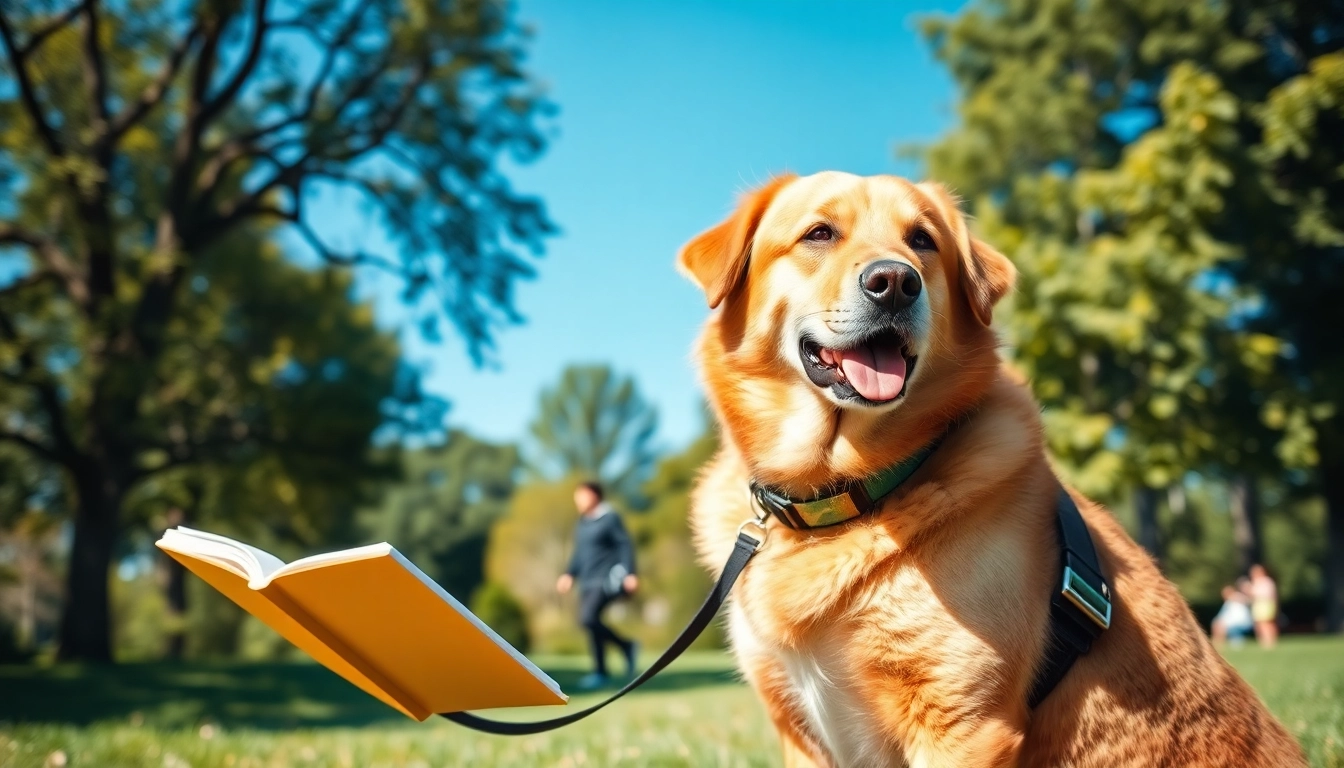Understanding the Role of Service Dogs
What is a Service Dog?
A service dog is a specially trained animal that assists individuals with disabilities by performing tasks that mitigate their specific challenges. These tasks can be highly varied, ranging from guiding individuals with visual impairments to providing support for individuals suffering from anxiety or seizures. Unlike emotional support animals, service dogs are granted specific legal protections and are recognized as working animals. This crucial distinction means they are permitted access to many places where pets are not allowed, such as restaurants, stores, and public transportation.
Benefits of Having a Service Dog
Having a service dog can profoundly impact the life of a person with disabilities. The primary benefits include:
- Increased Independence: Service dogs can help individuals complete daily tasks that they might struggle with, enabling greater independence.
- Emotional Support: The presence of a service dog can offer significant emotional benefits, reducing the symptoms of anxiety and depression.
- Enhanced Safety: Many service dogs are trained to alert their handlers to potential dangers, providing a higher level of safety.
- Social Interaction: Service dogs can act as social facilitators, helping their handlers engage more easily with others in public settings.
- Physical Assistance: For those with mobility issues, service dogs can help with tasks like opening doors or retrieving dropped items, enhancing physical mobility.
Legal Rights and Responsibilities
Service dogs are covered by the Americans with Disabilities Act (ADA), which protects the rights of individuals with disabilities in relation to service animals. Under the ADA, service dogs are permitted in all public places. However, it’s essential for service dog handlers to understand that they also carry responsibilities, such as keeping their dog under control and ensuring they do not disturb others. Misrepresenting a dog as a service animal can have legal ramifications and undermine the credibility of legitimate service animals.
Steps to Get a Service Dog
Identifying Your Needs
Before applying for a service dog, take the time to evaluate your specific needs and how a service dog may assist you. Consider the following aspects:
- Type of Disability: Clearly define the nature and extent of your disability. This includes physical and mental health aspects.
- Tasks Required: Identify the specific tasks that a service dog will need to perform to help you in daily life.
- Lifestyle Considerations: Reflect on your daily routine and how a dog would fit into it. For example, consider your living situation, work environment, and social interactions.
Choosing the Right Organization
Many organizations train and place service dogs. It’s crucial to choose one that aligns with your specific needs and values. Look for organizations that:
- Have a reputable track record and positive reviews from previous clients.
- Understand your specific circumstances and offer customized training solutions.
- Follow industry standards for training and ethics, such as those outlined by Assistance Dogs International.
Application Process Explained
The application process for obtaining a service dog can be intricate and lengthy. Generally, it involves:
- Initial Application: Fill out the organization’s application form, which typically includes personal information, medical documentation, and details about your disability.
- Interviews: Be prepared for interviews with professional trainers or representatives who will assess your need for a service dog.
- Match Assessment: The organization will evaluate potential matches to find a dog suited for your needs.
- Training Period: After being matched with a dog, you may undergo training to work together effectively.
Training and Certification of Service Dogs
Understanding Training Requirements
Service dogs undergo rigorous training programs that can last months to years, depending on the tasks they are required to perform. Training typically includes:
- Basic Obedience: Fundamental commands such as sit, stay, and heel to ensure reliable control.
- Task-Specific Training: Training tailored to the specific needs of the handler, such as alerting to seizures or guiding visually impaired individuals.
- Socialization: Ensuring service dogs are comfortable in various public settings and with diverse people.
- Public Behavior: Training to behave appropriately in all environments, avoiding distractions or disturbances.
Certification Process Overview
Although the ADA does not require service dogs to be certified, many organizations still offer certification as a means of ensuring that the dog meets certain training standards. The certification process may include:
- Evaluation of the dog’s behavior and training progress by a certified trainer.
- Verification of the dog’s ability to perform specific service tasks as required by the handler.
Maintaining Certification and Ongoing Training
Once a service dog is certified, it’s essential to continue training and evaluation to ensure consistent performance. This may involve periodic assessments by trainers, refreshers on training tasks, and maintaining public behavior standards. Additionally, regular practice and positive reinforcement techniques are vital for keeping skills sharp.
Funding Options for Service Dogs
Understanding Cost Factors
Obtaining a service dog can be a significant financial investment, with costs ranging from $15,000 to over $30,000 depending on factors such as training, breed, and specific tasks required. Understanding the key cost components is essential for budgeting appropriately:
- Initial Costs: The purchase price, training fees, and costs associated with obtaining medical documentation.
- Ongoing Care: Regular veterinary care, grooming, food, and supplies.
- Insurance Considerations: Exploring any potential insurance coverage for service dogs may also provide some financial relief.
Funding Resources Available
Several funding resources can assist individuals looking to obtain a service dog, including:
- Non-profit organizations that offer grants or subsidized programs for service dogs.
- Government assistance programs that may provide financial support.
- Community fundraisers and crowdfunding campaigns to cover expenses.
Possible Grants and Assistance Programs
Researching available grants and assistance programs is crucial. Many organizations offer assistance specifically aimed at those in need of service dogs. These programs may vary in eligibility criteria, application procedures, and funding amounts. Some of the most common grants or assistance include:
- Veterans Benefits: Programs specifically designed for veterans seeking service dogs.
- Disability Grants: Focused assistance for individuals with disabilities to obtain necessary service animals.
Long-Term Care and Support for Service Dogs
Healthcare and Maintenance Needs
Providing lifelong care for a service dog is essential for their well-being and effectiveness. This includes:
- Routine Veterinary Care: Regular check-ups and vaccinations are essential to maintaining the health of your service dog.
- Daily Exercise: Ensuring adequate physical activity helps keep your dog healthy and well-adjusted.
- Nutritional Needs: A proper diet is crucial for overall health, which can vary based on the dog’s age, size, and activity level.
Building a Solid Bond with Your Service Dog
The bond between a handler and their service dog is fundamental to their partnership. To foster this bond:
- Engage in positive reinforcement training, using treats and praise to reward desired behaviors.
- Spend quality time together, not just during training or working hours, but also during play and relaxation.
- Be patient and understanding; building trust can take time, especially if the dog comes from a different background.
Community Support and Resources
Joining a community of service dog handlers can provide invaluable support and shared experiences. Consider seeking out:
- Support groups, both local and online, where individuals can share advice, experiences, and resources.
- Workshops or seminars providing ongoing education about advances in service dog training and handling.
- Networking opportunities with other service dog handlers for shared support and camaraderie.
In summary, the process to get a service dog involves understanding your needs, choosing the right organization, navigating the application process, and ensuring proper training and care. By following these guidelines and engaging with the right resources, you can build a fulfilling partnership with a service dog that enhances your quality of life.















Leave a Reply